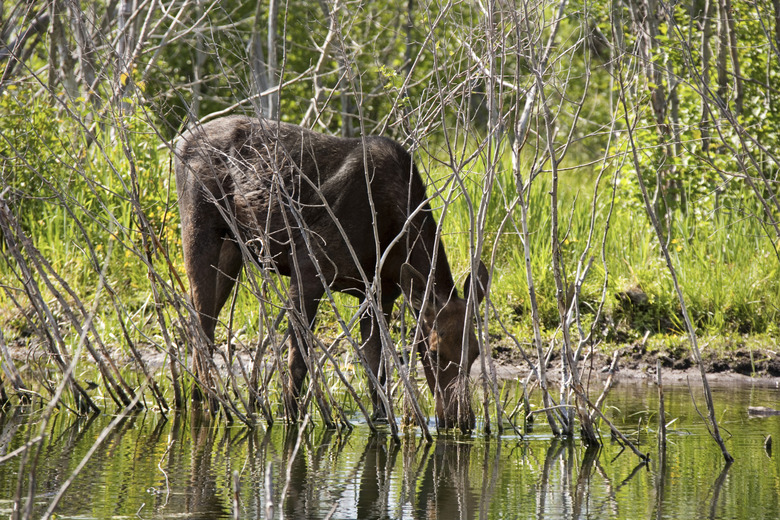Moose Habitat In Arizona
Moose do not live in Arizona, but there is some habitat for moose in parts of the state. Moose are found in nearby Colorado and Utah in the mountains. Although it is highly unlikely, a stray moose could find its way into the state. Arizona is mainly known as a hot and arid desert climate. Moose will never wander into this sector of the state. Temperatures in Phoenix routinely exceed 100 degrees, and this temperature is far too hot for the mighty creature.
Moose Range and Habitat
Moose Range and Habitat
According to Moose World, moose do not sweat; consequently, they dislike heat and prefer temperate regions with an average high temperature range between 55 degrees and 80 degrees. Their range reflects these preferences. They are usually found in the northern band of the United States including Minnesota, Maine, Montana, Wyoming and Alaska, as well as across Canada. A subspecies of moose called the Shiras moose live in the Rocky Mountains and dwell as far south as northern Utah and Colorado. Moose prefer forested regions with plenty of lakes, swamps and rivers.
No Moose in Arizona
No Moose in Arizona
The closest moose populations to Arizona live in northern Utah and Colorado. There are too many natural and manufactured barriers between there and any possible moose habitat in Arizona for a population to take hold. The areas south of Durango, Colorado, and southern Utah lack tree cover and are not suitable for moose crossing.
San Francisco Peaks
San Francisco Peaks
If moose could fly into Arizona and choose their habitat, the place they would zoom in on would be the San Francisco Peaks, north of Flagstaff, Arizona. Humphreys Peak is the highest of the mountains at 12,643 feet. Due to the elevation and the forest, moose could comfortably live here. A few lakes exist south of Flagstaff in the same forest, which moose would enjoy. Lake Mormon and Lake Mary would be two places a moose could swim and cool off, if they were found in Arizona.
National Forest South of Flagstaff
National Forest South of Flagstaff
The elevation gradually tails off between Flagstaff and Phoenix. Phoenix begins the Sonoran Desert region, which would be completely inhospitable to moose. Before getting to Flagstaff there is the Coconino National Forest, Tonto National Forest, and the Matzatzal Wilderness Areas. Enough elevation exists in these regions to keep the climate cool. Colcord Mountain is 7,513 feet and Baker Butte is 8,077 feet. Enough water exists in this region to sustain moose as well. Numerous rivers cascade through the area and many of these streams are dammed, creating reservoir lakes like Blue Ridge Reservoir and Theodore Roosevelt Lake.
Cite This Article
MLA
Nelson, Ted. "Moose Habitat In Arizona" sciencing.com, https://www.sciencing.com/moose-habitat-arizona-8793151/. 24 April 2017.
APA
Nelson, Ted. (2017, April 24). Moose Habitat In Arizona. sciencing.com. Retrieved from https://www.sciencing.com/moose-habitat-arizona-8793151/
Chicago
Nelson, Ted. Moose Habitat In Arizona last modified March 24, 2022. https://www.sciencing.com/moose-habitat-arizona-8793151/
